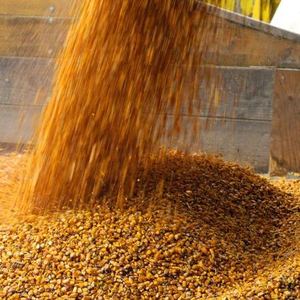WASDE reduces 2018-'19 forecast for corn use in ethanol

December 11, 2018
BY Erin Krueger
The USDA has reduced its forecast for 2018-’19 corn use in ethanol in the December edition of its World Agriculture Supply and Demand Estimates report. The report also predicts reduced corn imports and larger ending stocks.
According to the USDA, corn imports are lowered based on observed trade to date. Corn used to produce ethanol is reduced 50 million bushels to 5.6 billion bushels. Data from the USDA’s Grain Crushings and Co-Products Production report and the U.S. Energy Information Administration imply corn used for ethanol during the September to November quarter declined relative to the prior year for the first time since 2012. With no other use changes, ending stocks for corn are up 45 million bushels from last month.
The season-average corn price received by producers is unchanged at a midpoint of $3.60 per bushel, but he range is narrowed 5 cents on each end to $3.25 to $3.95 per bushel.
Foreign corn production is forecast higher, with increases for Ukraine, the EU and Thailand more than offsetting reductions for South Africa and Canada. EU corn production is higher, reflecting a larger forecast for Romania. Ukraine corn production is raised based on harvest results to date, and if realized, this month’s yield forecast would surpass the previous record set during 2016-’17 by nearly 20 percent. South Africa corn production is lowered as dry planting conditions are expected to reduce area. Canada corn output is down on declines in both area and yield. Corn exports are raised for Ukraine, but lowered for Mexico. Imports are raised for Vietnam, Canada, Japan, Iran and Columbia, with partially offsetting reductions for Libya and Venezuela. Foreign corn ending stocks are higher than last month, mostly reflecting increases for the EU, Mexico, Vietnam, Ukraine and Japan, that more than offset declines for Brazil, Canada, and South Africa.
Advertisement
Advertisement
Advertisement
Advertisement
Related Stories
U.S. fuel ethanol capacity fell slightly in April, while biodiesel and renewable diesel capacity held steady, according to data released by the U.S. EIA on June 30. Feedstock consumption was down when compared to the previous month.
XCF Global Inc. on July 8 provided a production update on its flagship New Rise Reno facility, underscoring that the plant has successfully produced SAF, renewable diesel, and renewable naphtha during its initial ramp-up.
The U.S. EPA on July 8 hosted virtual public hearing to gather input on the agency’s recently released proposed rule to set 2026 and 2027 RFS RVOs. Members of the biofuel industry were among those to offer testimony during the event.
The U.S. exported 31,160.5 metric tons of biodiesel and biodiesel blends of B30 and greater in May, according to data released by the USDA Foreign Agricultural Service on July 3. Biodiesel imports were 2,226.2 metric tons for the month.
The USDA’s Risk Management Agency is implementing multiple changes to the Camelina pilot insurance program for the 2026 and succeeding crop years. The changes will expand coverage options and provide greater flexibility for producers.
Upcoming Events










